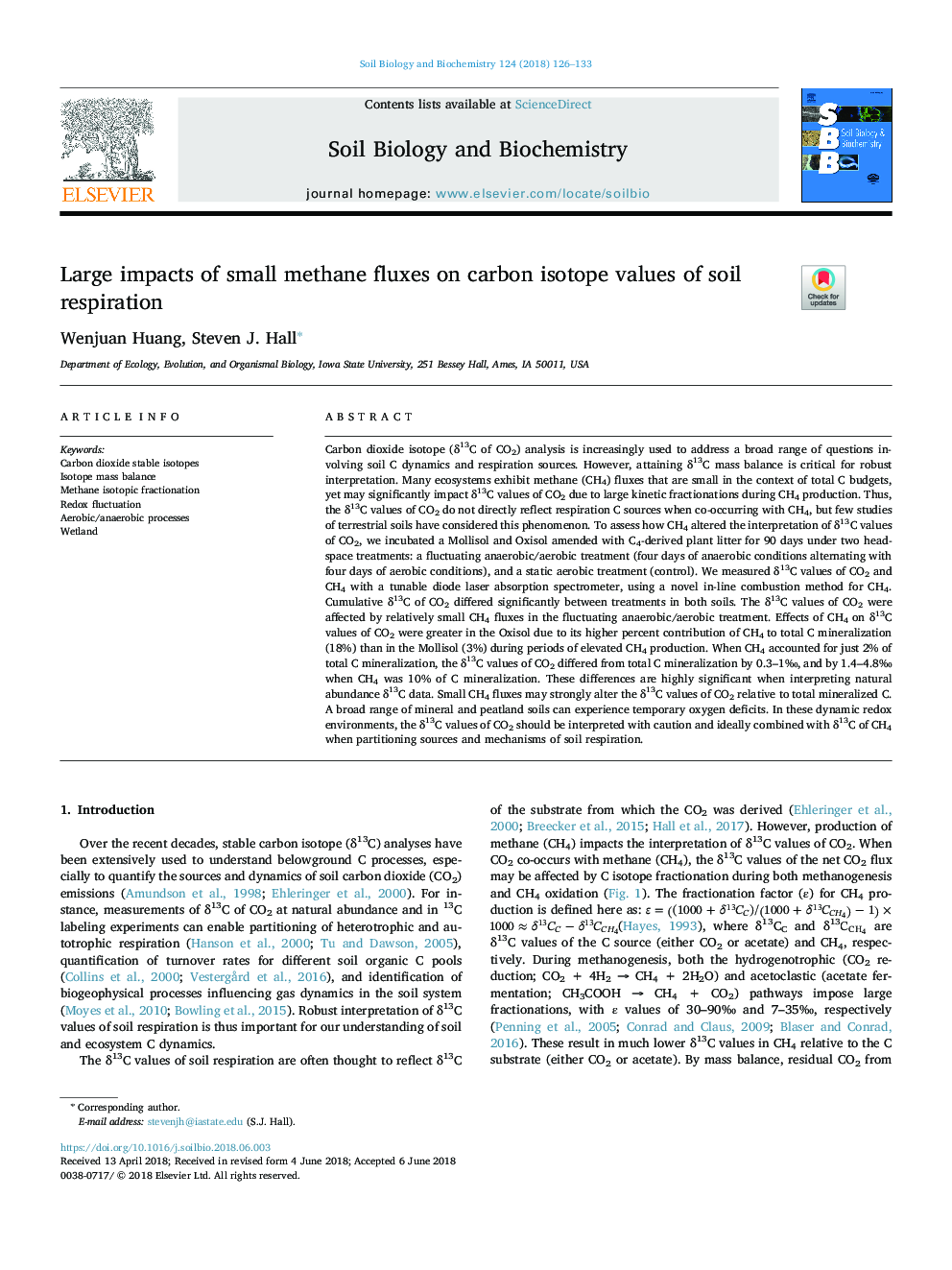| Article ID | Journal | Published Year | Pages | File Type |
|---|---|---|---|---|
| 8362559 | Soil Biology and Biochemistry | 2018 | 8 Pages |
Abstract
Carbon dioxide isotope (δ13C of CO2) analysis is increasingly used to address a broad range of questions involving soil C dynamics and respiration sources. However, attaining δ13C mass balance is critical for robust interpretation. Many ecosystems exhibit methane (CH4) fluxes that are small in the context of total C budgets, yet may significantly impact δ13C values of CO2 due to large kinetic fractionations during CH4 production. Thus, the δ13C values of CO2 do not directly reflect respiration C sources when co-occurring with CH4, but few studies of terrestrial soils have considered this phenomenon. To assess how CH4 altered the interpretation of δ13C values of CO2, we incubated a Mollisol and Oxisol amended with C4-derived plant litter for 90 days under two headspace treatments: a fluctuating anaerobic/aerobic treatment (four days of anaerobic conditions alternating with four days of aerobic conditions), and a static aerobic treatment (control). We measured δ13C values of CO2 and CH4 with a tunable diode laser absorption spectrometer, using a novel in-line combustion method for CH4. Cumulative δ13C of CO2 differed significantly between treatments in both soils. The δ13C values of CO2 were affected by relatively small CH4 fluxes in the fluctuating anaerobic/aerobic treatment. Effects of CH4 on δ13C values of CO2 were greater in the Oxisol due to its higher percent contribution of CH4 to total C mineralization (18%) than in the Mollisol (3%) during periods of elevated CH4 production. When CH4 accounted for just 2% of total C mineralization, the δ13C values of CO2 differed from total C mineralization by 0.3-1â°, and by 1.4-4.8â° when CH4 was 10% of C mineralization. These differences are highly significant when interpreting natural abundance δ13C data. Small CH4 fluxes may strongly alter the δ13C values of CO2 relative to total mineralized C. A broad range of mineral and peatland soils can experience temporary oxygen deficits. In these dynamic redox environments, the δ13C values of CO2 should be interpreted with caution and ideally combined with δ13C of CH4 when partitioning sources and mechanisms of soil respiration.
Keywords
Related Topics
Life Sciences
Agricultural and Biological Sciences
Soil Science
Authors
Wenjuan Huang, Steven J. Hall,
